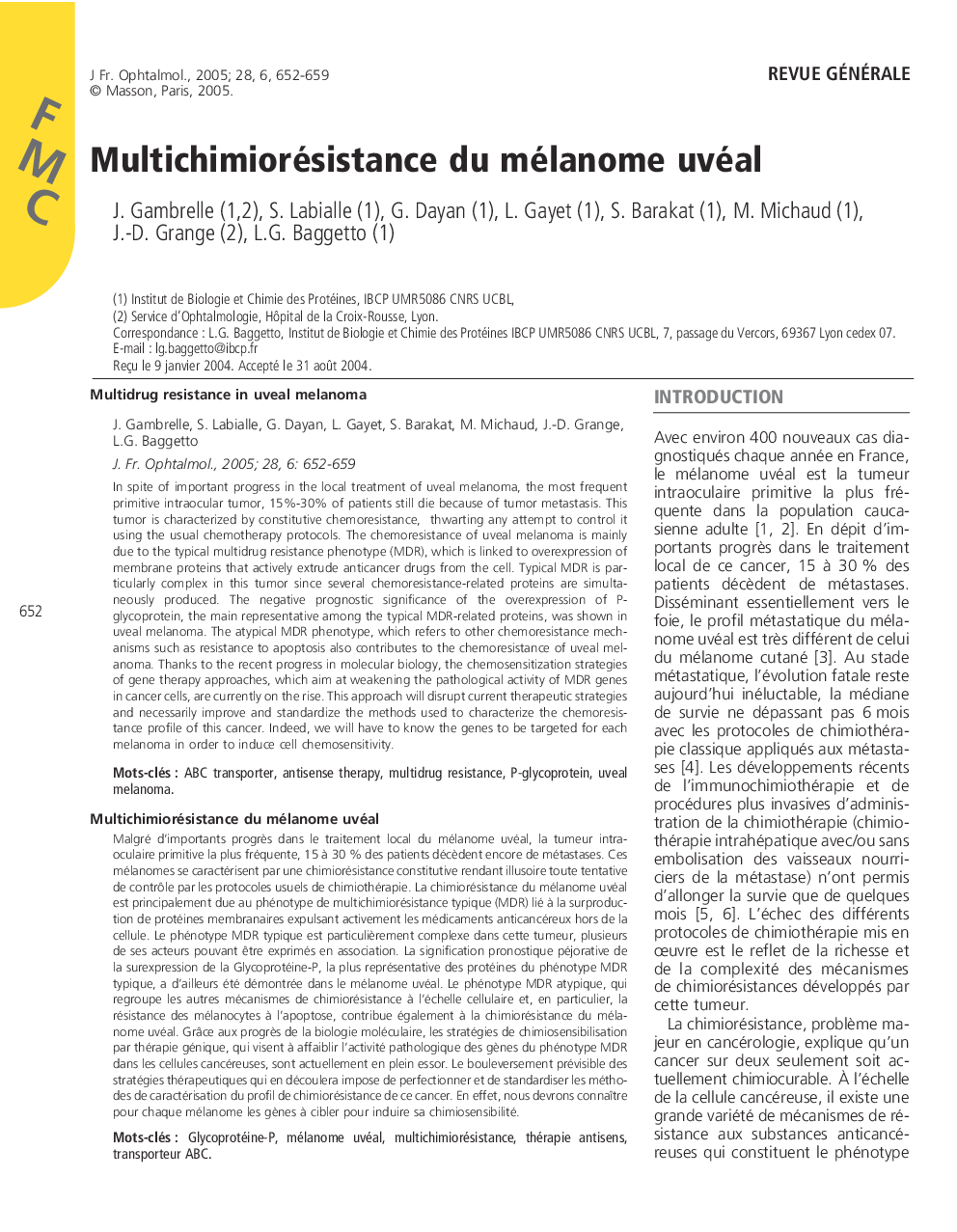| Article ID | Journal | Published Year | Pages | File Type |
|---|---|---|---|---|
| 9345745 | Journal Français d'Ophtalmologie | 2005 | 8 Pages |
Abstract
In spite of important progress in the local treatment of uveal melanoma, the most frequent primitive intraocular tumor, 15%-30% of patients still die because of tumor metastasis. This tumor is characterized by constitutive chemoresistance, thwarting any attempt to control it using the usual chemotherapy protocols. The chemoresistance of uveal melanoma is mainly due to the typical multidrug resistance phenotype (MDR), which is linked to overexpression of membrane proteins that actively extrude anticancer drugs from the cell. Typical MDR is particularly complex in this tumor since several chemoresistance-related proteins are simultaneously produced. The negative prognostic significance of the overexpression of P-glycoprotein, the main representative among the typical MDR-related proteins, was shown in uveal melanoma. The atypical MDR phenotype, which refers to other chemoresistance mechanisms such as resistance to apoptosis also contributes to the chemoresistance of uveal melanoma. Thanks to the recent progress in molecular biology, the chemosensitization strategies of gene therapy approaches, which aim at weakening the pathological activity of MDR genes in cancer cells, are currently on the rise. This approach will disrupt current therapeutic strategies and necessarily improve and standardize the methods used to characterize the chemoresistance profile of this cancer. Indeed, we will have to know the genes to be targeted for each melanoma in order to induce cell chemosensitivity.
Keywords
Related Topics
Health Sciences
Medicine and Dentistry
Ophthalmology
Authors
J. Gambrelle, S. Labialle, G. Dayan, L. Gayet, S. Barakat, M. Michaud, J.-D. Grange, L.G. Baggetto,
